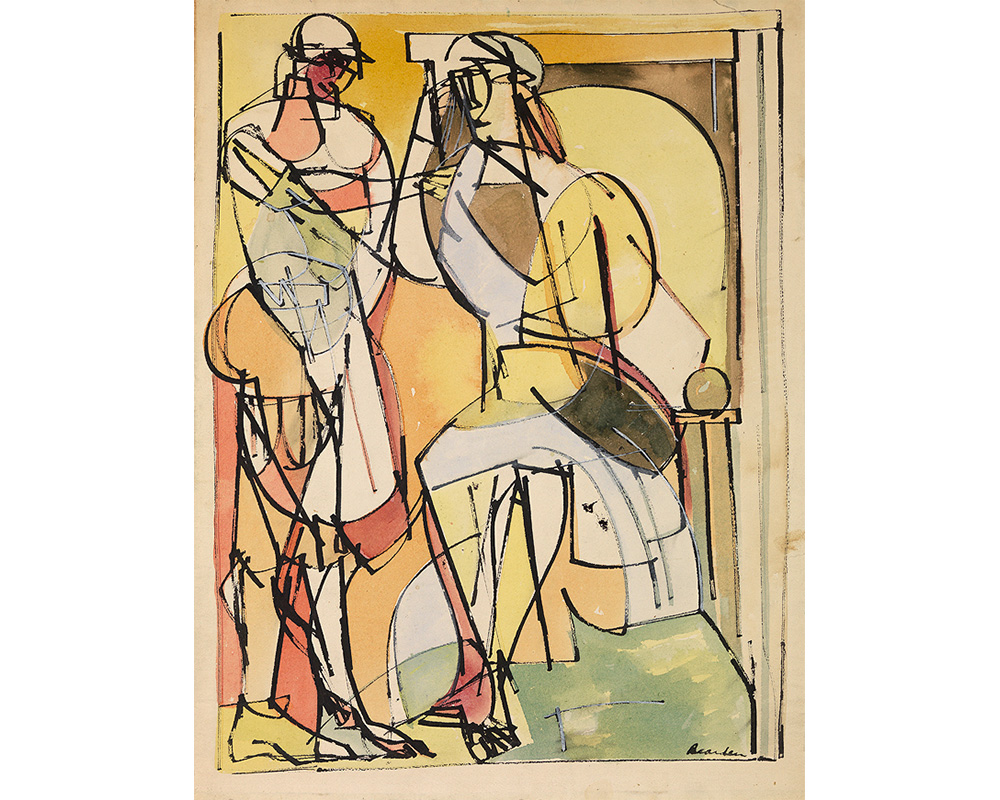
Romare Bearden: Brilliant Ambiguity
Julie Warchol is the 2012-2013 Brown Post-Baccalaureate Curatorial Fellow in the Cunningham Center.
Romare Bearden was a master of the art of synthesis. Born in Charlotte, North Carolina, Bearden grew up in the heart of the Harlem Renaissance during the 1920s and 30s. He created artworks which brilliantly fused his vast array of interests and influences: Cubism, jazz, folk art, Renaissance painting, African sculpture, Social Realism, Dutch painting, classic literature, and many others. Despite the composite nature of his work, it is remarkably and distinctly his own. Part artist and part art historian, Bearden was not only a renowned painter and collagist, but he also uncovered and published scholarship on previously unknown and undervalued Afro-American artists, forging an increased sense of respect and appreciation throughout the 20th-century.
Bearden’s Untitled watercolor drawing, which entered our collection this year, was produced during a transitional moment in the artist’s career. Between 1945 and 1950, Bearden briefly broke away from his subjective paintings of his Southern youth in order to visually interpret classic works of literature like the Bible, Homer’s Iliad, and Garcia Lorca’s Lament for a Bullfighter. The watercolor drawings Bearden produced during these years were his most abstract works to date. Their fragmented treatment of space was particularly influential to his famous collages, which he began in the 1960s.
In the process of researching Untitled (ca. 1947), I was struck by its stylistic similarity to Bearden’s so-called "Iliad variations” watercolor series of sixteen works exhibited in 1948. While Bearden’s preceding biblical drawings depict distinguishable narrative moments, the Iliad watercolors are called “variations” because they lack specificity, including only vague references to warriors and the city of Troy. The watercolors often share the same bright palette with black lines delineating the forms, evoking the open, shimmering shapes of stained glass, as seen in this work or this work known to be from the series.
The static figures posed in shallow space in Untitled and in the Iliad watercolors seem to recall classical figures on ancient Greek vase paintings chronicling the Trojan War. Here, the figure on the left is greatly stylized, much like the figure of Achilles on this sixth-century vase by Exekias, with the legs shown from the side and the torso simultaneously twisted to be seen from the front. It would come as no surprise that Bearden was influenced by the work of classical vase painters, given his broad art historical knowledge and referential nature. What is surprising, however, is Bearden’s ability to veil this mythical tale beneath so many layers of visual and narrative abstraction that without a title or exact date, it now proves difficult to concretely define its relationship to the Iliad variations. It makes one wonder, is this actually a work from the series exhibited in 1948 or simply a contemporary drawing which is only related stylistically?